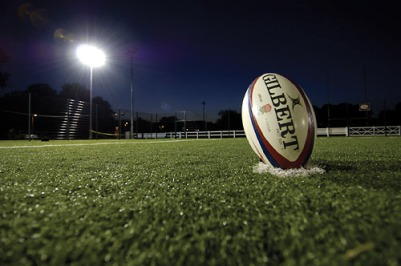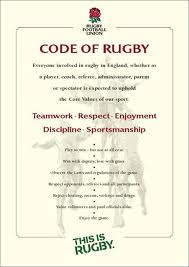
Kicking in rugby is a big part of the game. Games can be won on the foot of a player. Whether it is kicks for touch, grubbers, box kicks, kicking for points, or drop goals it is essential that everyone that plays rugby learns how to kick!
Kicking for touch– Kicking for touch occurs when there is a penalty called. The team that has possession of the ball may tap the ball off the foot and run forward or may kick the ball out of bounds for touch. When the ball is kicked out of bounds, the touch judge will mark the spot and a line-out will occur. The advantage of kicking for touch is that you can advance the ball up the field a long distance in a very short amount of time, and you also get to throw the ball in. Your penalty-your kick-your throw in.
Grubbers– A Grubber kick is a type of kick that makes the ball roll forward close to the ground but will still bounce up at the right time, if done correctly. A grubber is typically used by the fly half or other backs in order to gain position on a defensive line that is flat or that has gaps in it. Players can also kick a grubber when in a one on one situation because you cannot tackle or interfere with a player that does not have the ball. A grubber can be the most effective kick when done correctly because you can be much more accurate with this kick, and also has the best potential outcomes.
Box Kicks– A box kick is a kick that is done by a player, normally the scrum half, to quickly clear the ball out a certain area. This is a quick, grab the ball and immediately kick the ball. However, it is a kick that is done typically on the side of the body. It is not a ‘normal face the direction you are kicking.’ It is a perpendicular kicking action. But you must remember that the person who kicks the ball must chase the ball in order to put everyone onside.
Kicking for points– This type of kick is only done at a stoppage of play, or a penalty. If you are near the other teams try zone and need points you can elect to kick for points on a penalty. You must indicate to the ref that it is what you are doing and he or she will allow you set up the ball. It is 3 points should you make it through the uprights. However, it is still a live ball if you miss and the opposing team is allowed to run the ball back and continue play.
Drop Goals– A drop goal is a kick that happens during regular play that is dropped from the player, to the ground, and then kicked through the uprights. These kicks are very rare due to the fast paced speed of the game and the constant distraction. These kicks are typically done by the fly half in hopes to gain 3 points.




